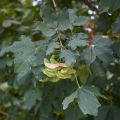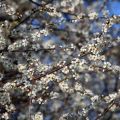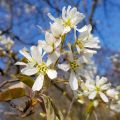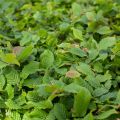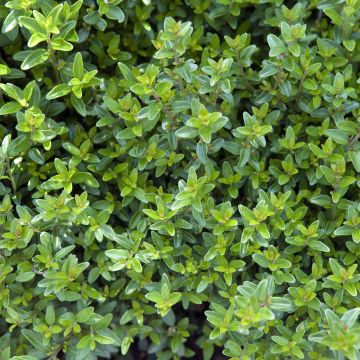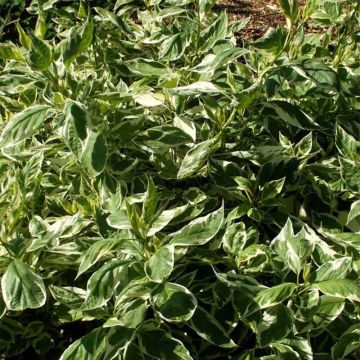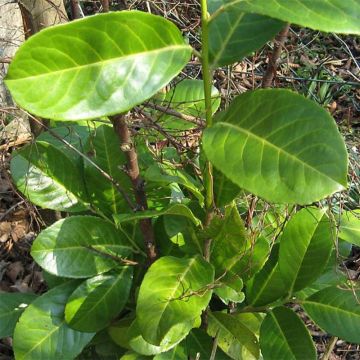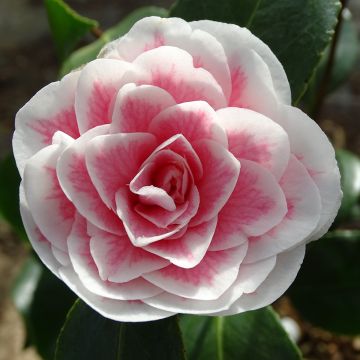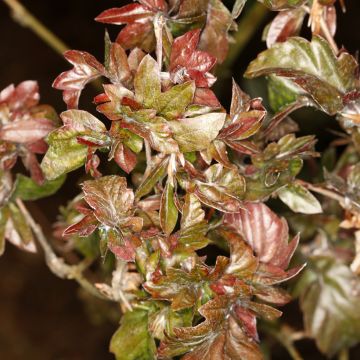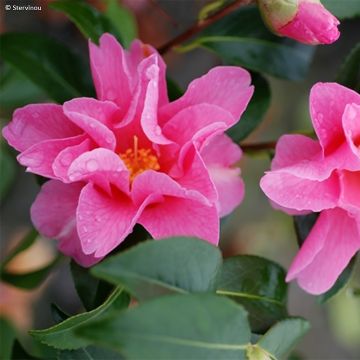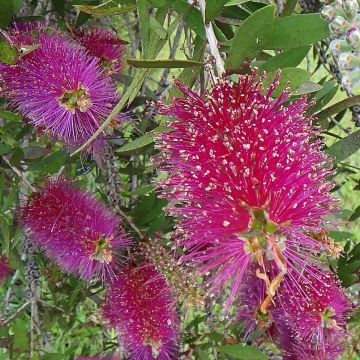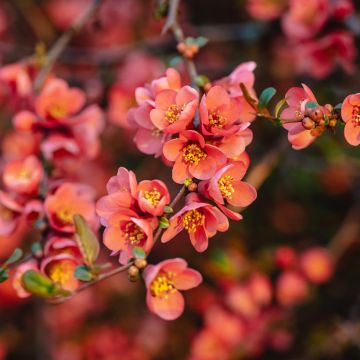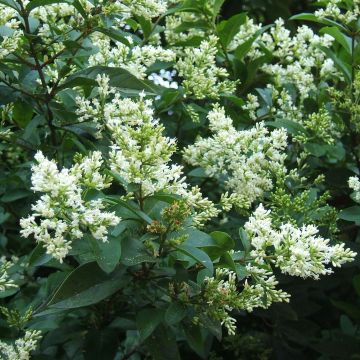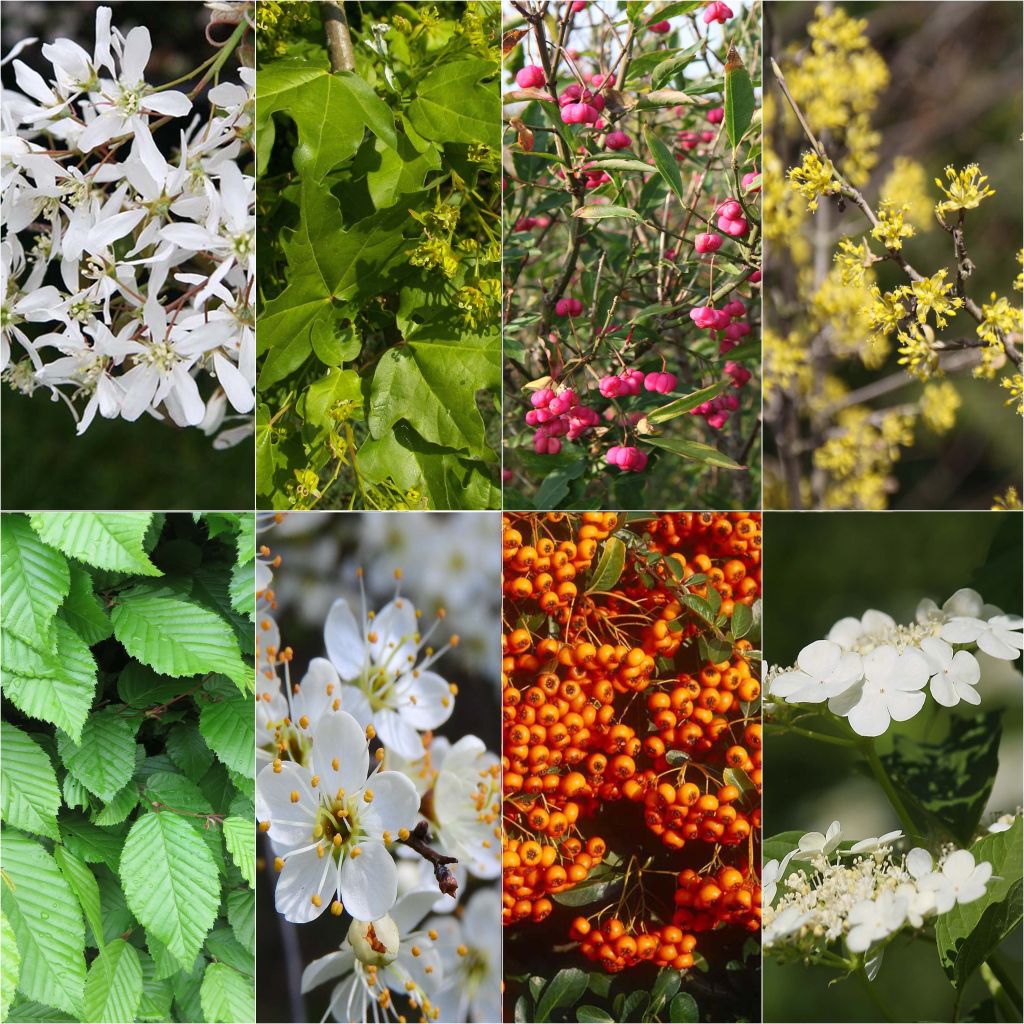

10m (33ft) of ecological hedging kit for large gardens
10m (33ft) of ecological hedging kit for large gardens
Acer, Prunus, Euonymus, Cornus, Viburnum, Amelanchier, Pyracantha, Carpinus
The package arrived partially necked, some pots broken, soil gone. The delivery person refused to let our neighbours check the contents of the package before signing. But the vine-plants look beautiful and vigorous, with one exception. We'll see in a few years!
Héléna F., 11/11/2019
This plant carries a 24 months recovery warranty
More information
We guarantee the quality of our plants for a full growing cycle, and will replace at our expense any plant that fails to recover under normal climatic and planting conditions.
From €5.90 for pickup delivery and €6.90 for home delivery
Express home delivery from €8.90.
Delivery to Corse prohibited: UE law prohibits the import of this plant from mainland France to Corse as part of the fight against Xylella fastidiosa. Please accept our sincere apologies.
More information
Does this plant fit my garden?
Set up your Plantfit profile →
Collection items (8 plants)
Description
We offer you a kit of 8 varieties of bushes that are flowering, easy to grow and maintain, to create a free and welcoming hedge for small garden wildlife. This ecological hedge for large gardens provides flowers for bees and butterflies, diverse foliage, beautiful autumn colours, and decorative berries, some of which are edible depending on the species, which will nourish the birds. This kit allows you to create approximately 10 metres (33 feet) of hedging.
The kit consists of:
- 1 Field Maple - Acer campestre. This deciduous tree can reach 8 metres (26 feet) in height by 4 metres (13 feet) in width. Appreciated for its beautiful autumn colours of coppery yellow, it is very easy to grow, perfectly hardy, and drought-resistant once established.
- 1 Blackthorn - Prunus spinosa. This large thorny deciduous shrub or small tree, 3.50 metres (11 feet) all around, offers superb white spring flowering, followed by black and edible fruits, the sloes sought after by birds. Perfectly hardy, very robust and resistant, it grows everywhere, without care or maintenance, even in dry soil.
- 1 European Spindle Tree - Euonymus europaeus. This deciduous shrub, 2 metres (7 feet) all around at a minimum, is adorned with flamboyant autumn colours, ranging from red to Indian pink and purple. Its discreet spring flowering gives way to remarkably coloured orange and fuchsia pink fruits that some birds love. Very hardy and undemanding.
- 1 Cornelian Cherry - Cornus mas. This deciduous shrub can reach 4 metres (13 feet) in height by 2 metres (7 feet) in width. It is interesting for its yellow flowering in February-March, which is fragrant and nectar-rich, and for its beautiful autumn colours. Its red and edible fruits will delight birds and small mammals. Undemanding, hardy, and very tough.
- 1 Guelder Rose - Viburnum opulus - Snowball. This deciduous large shrub, approximately 3.50 metres (11 feet) in height by 3 metres (10 feet) in width, offers white spring flowering in large, nectar-rich pompoms. It gives way to red berries that birds love. Its maple-like foliage turns purple at the end of the season. Hardy and fast-growing, it is easy to grow in ordinary soil, not too chalky and not too dry.
- 1 Juneberry - Amelanchier lamarckii. At least 4 metres (13 feet) high and 2 metres (7 feet) wide, this beautiful deciduous shrub offers young bronze foliage turning green and finally red in autumn. It is covered with clusters of white flowers in April and produces juicy and sweet fruits sought after by birds, and delicious in jam. Very hardy, it grows in any soil without excessive limestone and not too dry.
- 1 Pyracantha SAPHYR Orange - Firethorn. A bit bushy and unruly, this very thorny shrub, 3 metres (10 feet) high by 2.50 metres (8 feet) wide, is interesting for its evergreen foliage, its abundant spring flowering, white, nectar-rich, and its beautiful bright orange berries sought after by some birds. It is an indestructible plant that grows absolutely everywhere. This variety is disease-resistant.
- 1 European Hornbeam - Carpinus betulus. This tree with semi-evergreen foliage can reach 9 metres (29 feet) in height by 4.50 metres (15 feet) in width if not pruned. The flowers and leaves appear at the same time in spring. Its foliage turns yellow-orange in autumn and remains attached to the branches for a long time before falling. It provides an excellent refuge for birds to nest. Very hardy and undemanding, it adapts to any sufficiently deep soil, even limestone and occasionally dry.
Plant these bushes in full sun or partial shade, in ordinary but well-prepared soil, mixing them and spacing them 1.20 metres (4 feet) apart. It is best to avoid pruning this ecological hedge to avoid compromising flowering and fruiting. If you need to intervene, avoid doing so during the nesting season. Proceed on a case-by-case basis, shortening the branches of shrubs that become too large, especially the Pyracantha, which tends to grow in a somewhat anarchic manner.
Report an error about the product description
Plant habit
Flowering
Foliage
Botanical data
Acer, Prunus, Euonymus, Cornus, Viburnum, Amelanchier, Pyracantha, Carpinus
Cultivar or hybrid
Other Hedge shrubs
Planting and care
Plant this kit in full sun or partial shade, in well-prepared soil. Disease resistant and low-maintenance, these bushes only require mulching in summer in case of very dry weather to maintain some moisture. Water them regularly in the first few years in case of marked drought. Once well-established, they will fend for themselves. You can prune the longest branches to help your bushes branch out. Absolutely avoid severe and repeated pruning that limits flowering and fruiting, unless your bushes become too large. Prune on a case-by-case basis, according to needs and with moderation.
Planting period
Intended location
Care
-
, onOrder confirmed
Reply from on Promesse de fleurs
Haven't found what you were looking for?
Hardiness is the lowest winter temperature a plant can endure without suffering serious damage or even dying. However, hardiness is affected by location (a sheltered area, such as a patio), protection (winter cover) and soil type (hardiness is improved by well-drained soil).

Photo Sharing Terms & Conditions
In order to encourage gardeners to interact and share their experiences, Promesse de fleurs offers various media enabling content to be uploaded onto its Site - in particular via the ‘Photo sharing’ module.
The User agrees to refrain from:
- Posting any content that is illegal, prejudicial, insulting, racist, inciteful to hatred, revisionist, contrary to public decency, that infringes on privacy or on the privacy rights of third parties, in particular the publicity rights of persons and goods, intellectual property rights, or the right to privacy.
- Submitting content on behalf of a third party;
- Impersonate the identity of a third party and/or publish any personal information about a third party;
In general, the User undertakes to refrain from any unethical behaviour.
All Content (in particular text, comments, files, images, photos, videos, creative works, etc.), which may be subject to property or intellectual property rights, image or other private rights, shall remain the property of the User, subject to the limited rights granted by the terms of the licence granted by Promesse de fleurs as stated below. Users are at liberty to publish or not to publish such Content on the Site, notably via the ‘Photo Sharing’ facility, and accept that this Content shall be made public and freely accessible, notably on the Internet.
Users further acknowledge, undertake to have ,and guarantee that they hold all necessary rights and permissions to publish such material on the Site, in particular with regard to the legislation in force pertaining to any privacy, property, intellectual property, image, or contractual rights, or rights of any other nature. By publishing such Content on the Site, Users acknowledge accepting full liability as publishers of the Content within the meaning of the law, and grant Promesse de fleurs, free of charge, an inclusive, worldwide licence for the said Content for the entire duration of its publication, including all reproduction, representation, up/downloading, displaying, performing, transmission, and storage rights.
Users also grant permission for their name to be linked to the Content and accept that this link may not always be made available.
By engaging in posting material, Users consent to their Content becoming automatically accessible on the Internet, in particular on other sites and/or blogs and/or web pages of the Promesse de fleurs site, including in particular social pages and the Promesse de fleurs catalogue.
Users may secure the removal of entrusted content free of charge by issuing a simple request via our contact form.
The flowering period indicated on our website applies to countries and regions located in USDA zone 8 (France, the United Kingdom, Ireland, the Netherlands, etc.)
It will vary according to where you live:
- In zones 9 to 10 (Italy, Spain, Greece, etc.), flowering will occur about 2 to 4 weeks earlier.
- In zones 6 to 7 (Germany, Poland, Slovenia, and lower mountainous regions), flowering will be delayed by 2 to 3 weeks.
- In zone 5 (Central Europe, Scandinavia), blooming will be delayed by 3 to 5 weeks.
In temperate climates, pruning of spring-flowering shrubs (forsythia, spireas, etc.) should be done just after flowering.
Pruning of summer-flowering shrubs (Indian Lilac, Perovskia, etc.) can be done in winter or spring.
In cold regions as well as with frost-sensitive plants, avoid pruning too early when severe frosts may still occur.
The planting period indicated on our website applies to countries and regions located in USDA zone 8 (France, United Kingdom, Ireland, Netherlands).
It will vary according to where you live:
- In Mediterranean zones (Marseille, Madrid, Milan, etc.), autumn and winter are the best planting periods.
- In continental zones (Strasbourg, Munich, Vienna, etc.), delay planting by 2 to 3 weeks in spring and bring it forward by 2 to 4 weeks in autumn.
- In mountainous regions (the Alps, Pyrenees, Carpathians, etc.), it is best to plant in late spring (May-June) or late summer (August-September).
The harvesting period indicated on our website applies to countries and regions in USDA zone 8 (France, England, Ireland, the Netherlands).
In colder areas (Scandinavia, Poland, Austria...) fruit and vegetable harvests are likely to be delayed by 3-4 weeks.
In warmer areas (Italy, Spain, Greece, etc.), harvesting will probably take place earlier, depending on weather conditions.
The sowing periods indicated on our website apply to countries and regions within USDA Zone 8 (France, UK, Ireland, Netherlands).
In colder areas (Scandinavia, Poland, Austria...), delay any outdoor sowing by 3-4 weeks, or sow under glass.
In warmer climes (Italy, Spain, Greece, etc.), bring outdoor sowing forward by a few weeks.

































